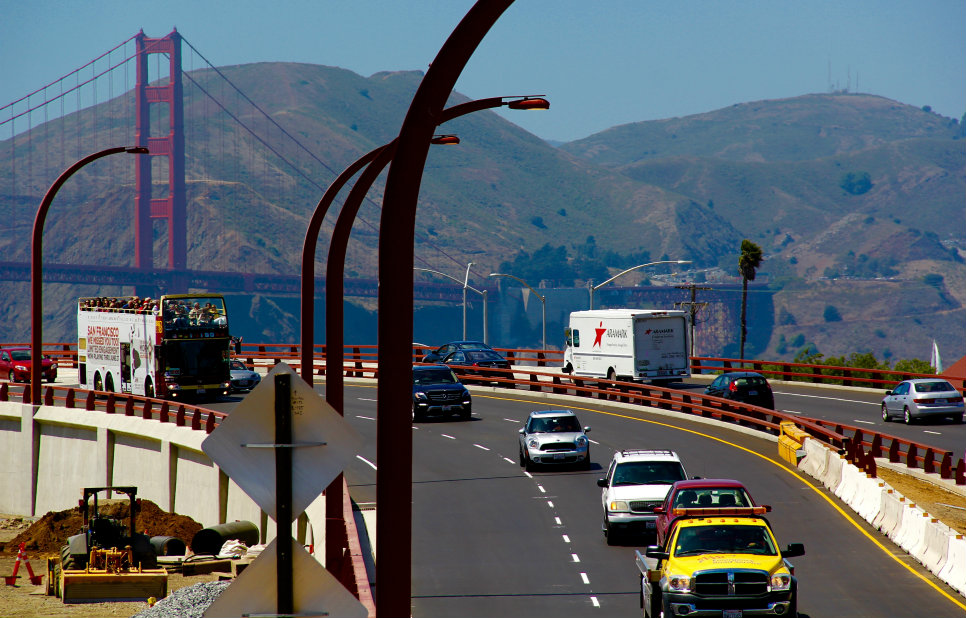
Bay Area construction market staged for growth in 2016
Posted by Paul Cianciarulo on Jan 6, 2016
The San Francisco Bay Area construction market just finished one of its all-time busiest years with backlogs built beyond pre-recession levels, and the good news is we don’t see a slowdown in 2016.
This is an exciting time to be in construction.
“If 2015 was off the charts exceptional for the Bay Area, historic in many ways, then we see 2016 as still good,” said Mike Miller, executive director of Santa Clara Building Exchange. “With exceptionally large construction projects like the Apple campus, Levi’s Stadium, BART to San Jose, and many more large projects in the area, we have had a great last couple of years. We should see that continue in 2016.”
After weathering one of the biggest economic meltdowns in decades, with hundreds of thousands of construction jobs lost starting in 2008, the industry has rebounded with the rest of the economy and is positioned to enter the New Year with strong tailwinds.
I started in construction in 1981 as a construction inspector for Santa Clara County and worked at several companies, including my own grading and paving business in the early 1990s, before signing on as Graniterock’s chief estimator in 2008.
I know very well this industry is a roller coaster, and I believe there are several reasons we are in for another great ride this year.
From low oil prices to a hot housing market, an ever-sizzling tech sector, low unemployment and solid federal funding for transportation, an array of factors indicate 2016 should be another year of growth.
Let’s start in Washington, D.C., where President Obama signed a five-year $308 billion highway bill in December, the first long-term national transportation spending package in a decade.
The new law, paid for with gas tax revenue and a package of $70 billion in offsets from other areas of the federal budget, calls for spending approximately $205 billion on highways and $48 billion on transit projects.
The federal bill allocates $26 billion to California over the next five years for a variety of transportation projects, a 14.5 percent increase over current federal allocations.
This is exactly the type of funding Caltrans and local public works agencies have sought from our elected leaders as they’ve watched the state’s infrastructure deteriorate over the past decade.
With this pot of money available for fixing crumbling roads and bridges, we anticipate an uptick in badly needed public projects that have been stalled due to lack of funds.
In addition to the federal legislation, 16 cities and counties across the Central Coast and Bay Area are poised to place transportation related tax measures on their November 2016 ballots – from Alameda to Monterey County. Though the measures require two-thirds voter approval, a stiff hurdle, the abundance of measures is a clear sign we’ve reached a low in infrastructure maintenance and desperately need voters to understand the magnitude of the problem. Failing roads and bridges and jammed highways are a quality of life issue.
If passed, those ballot measures would provide local funding for projects such as overlays, road resurfacing, highway expansions and street beautification projects.
While the majority of Graniterock’s construction work comes from public transportation projects, much of our growth since 2013 has stemmed from the robust Silicon Valley technology sector. Firms such as Google, Apple, Uber, Netflix and Facebook – all employment leaders that push other industries forward - have enlarged their geographical footprints with new office buildings, parking garages and other new construction.
Those projects won’t be going away, especially as tech and biotech companies continue to expand hiring, which fuels the need for new housing, bigger offices, parking lots, schools, restaurants and shopping centers.
We expect tech to be the main driver in the private construction market in 2016.
While we’re pleased by this rebound in the building industry, most construction firms, including Graniterock, face workforce shortages that could impact our ability to perform at the highest levels if we don’t plan ahead.
In addition to aggressive bidding, we’ll be putting a strong focus on recruiting new construction workers and ensuring they’re properly trained in 2016.
Because no matter the state of the economy, Graniterock works best when we’re able to plan and execute our jobs to the highest standard.
Contact Paul Cianciarulo at [email protected].
Back to all Blogs
